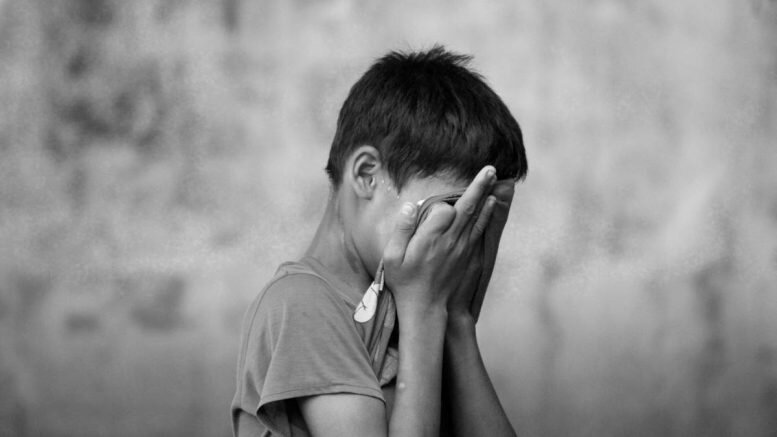Statistics Norway (SSB) has released its latest annual findings, for 2019, on child poverty in Norway. Some 11.7% of all children, in Norway, now live in “households with persistently low income.”The findings have also shown the perilous situation of children with an immigrant background. They are statistically overrepresented and account for 60% of all these children. This report helps to highlight that a changing Norway has left these most vulnerable children behind. There will be huge financial, economic, political, societal, and moral consequences for this increase in child poverty.
Key figures show increasing child poverty, especially for immigrant children
The SSB releases annual statistics on the income and wealth of Norwegian households. Their latest figures, released, are for 2019, the year before the coronavirus pandemic began. The figures, but a snapshot in time, highlight the growth of child poverty, in recent years, in Norway.
Whilst income, for Norwegian households, had shown a small positive increase (0.8% compared to 2018), this was coupled with an increase in the proportion of children living in households deemed to have “persistently low income.” This is defined as a household possessing an income that is “60% below the national median income over a period of 3 years.” For 2019, this meant children living in a household with earnings below NOK 216,132.
What was even more striking was the disproportionate overrepresentation of children with an immigrant background. Whilst they only account for 18% of the general child population, the SSB figures show that they account for 60% of all children living in households with “persistently low income.”
There was a 0.4% increase in this proportion, for 2019, from the year before, which, to illustrate it another way, means 4,000 more children falling into this category of dire desolation. This means that there are some 115,000 children, or 11.7% of all children in Norway, that live under, or perilously close to, the poverty line…in the 21st century!
Child poverty increase very much a 21st-century trend
Child poverty has, since the turn of the century, seen an alarming rise in Norwegian society. This increase in the proportion of child poverty has been dramatic. At the turn of the millennium, only 4% of children, in Norway, were deemed to be living in households with “persistently low income.”
By 2004, this had almost doubled to 7.4%. The strong economic conditions, throughout the 2010s, were a result of high oil prices. This “oil boom” did not reap rewards for some of the most vulnerable in society. The figures show that in every year of this decade there was an increase in child poverty. This proportion had spiraled out to 11.7% by 2019.
What is most unsettling is that in a period of economic boom, of (almost) full employment, of rising incomes and wealth, there was an increase in child poverty. How and why did this proportion increase during one of the most prosperous times in Norwegian history?
The economic impact of the coronavirus pandemic will, naturally, have some effect on unemployment, incomes, and poverty. If this proportion rose in the economic good times, what will happen to those figures during this current period of economic uncertainty? If child poverty increase during a boom, what happens when the economy goes bust?
Changing trends in recent immigration history
The figures also show how Norway is changing. The story of Norwegian society, since the turn of the millennium, has been the major success of diverse and varied immigration. The changing face of Norway has been established by successive governments through a mixture of foreign aid and immigration policies.
Norway’s humanitarian aims have such cross-party, and public, support that it still managed to provide aid for 109 countries in the middle of a pandemic. This aid is mostly delivered to countries through a combination of grants, loans, and joint ventures with United Nations agencies. However, it can also take the form of refugee quotas. Recently, Norway has taken in refugees from war-torn countries, like Afghanistan, Somalia, Syria, and Yemen.
Since Norway is also a part of the European Economic Area (EEA), which is a signatory to the Schengen Treaty, freedom of movement of European citizens is also guaranteed. This has allowed many people from Baltic and Eastern European countries to migrate to Norway.
Since the turn of the millennium, the once traditional Nordic and Western European citizens, who once made up a sizable majority of immigrants, have been replaced, through foreign aid initiatives and more liberal immigration policies, by peoples from countries in the former Eastern bloc, North East Africa and West and South Asia. However, these people, from less developed countries, are among the most vulnerable in society.
Immigrant children most at risk
The figures also show a worrying trend that has been occurring for almost a decade for children with an immigrant background. These are defined, by the SSB, as children “who have immigrated to Norway or were born in Norway to parents who have immigrated.”
Since 2013, these children are the majority among children in the low-income group. Looking at the 2019 figures, of the 115.000 children who are in “low-income households”, some 67,700 (58.8%) are children with an immigrant background.
The difference between the two forms of “immigrant children” is also noticeable. 39.1% of all children with an immigrant background live in a house with a persistently low income. Since 2011, this figure, which was 33.1% has increased by 6% in almost a decade.
The most vulnerable category was children who had immigrated by themselves. Some 49.4% of these kids lived in households close to poverty.
Mixed results for immigrants from West Asia and Baltics
The statistics also highlight how immigration, country of origin, and poverty are intertwined. Families, and children, fleeing from war-ravaged countries account for both the largest percentage and largest number of children living close to poverty.
The ongoing quagmire of civil war in Syria has seen unprecedented numbers emigrate for a safer and better life. In 2018, the number of Syrian children, in Norway, doubled to 6,000. Often arriving as a result of either Non-Governmental Organisations, or Norway’s own, refugee quotas, these people are among the most vulnerable in Norwegian society. This meant that, for 2019, the SSB found that some 9,000 Syrian children (almost 90% of the total) were living, in Norway, in households with persistently low income.
Those people fleeing civil war, violence, and strife, from countries in the Horn of Africa, also saw their children at risk. There are 11,000 children, with a background from Somalia, who are in this low-income group, the largest number of any children. Eritreans are also overrepresented in this group. There were 4,000 children in this category in 2019, which was a 700 child increase on the year before.
However, there are some rare glimmers of hope for immigrants. Children with a background from both Poland and Lithuania saw decreases in the number of children living in low-income households. Lithuanians saw three consecutive years of decline, with the proportion of children in this category fall to 20.3% in 2019. The proportion of children with a Polish background living in low-income households is, as of 2019, at 21.4%, which has decreased dramatically from 30% back in 2013 and 2014.
New life in Norway often has many challenges
Although generally regarded as a society that is among the most prosperous, harmonious, equitable, and tolerant in the world, there are still huge structural challenges for many in Norway. As the SSB figures have shown, since 2013, the majority of children who live in persistently low-income households have an immigrant background.
These are the people, often, leaving their countries with little more than the clothes on their back. Employment can, often, be hard to find due to a mixture of a lack of Norwegian language skills, education, and a professional, or social, network.
Adjusting to a new life, in a completely different country, does take time. Many of these immigrants come from countries with a completely different set of societal and cultural norms and expectations, languages, political and economic systems, and gender roles. Cultural education is just as important as any language skills to enrich both wallets and lives.
For many western countries, Norway too is currently in the midst of a generational reassessment of race relations. Widespread immigration has only occurred for half a century. Racism, Islamophobia, the fear of “the other”, orientalism, and intolerance have all become a small, but nonetheless noticeable, part of Norwegian political and societal life.

Targeted government support the way forward
The SSB figures show nothing less than a national tragedy. Child poverty has increased not only year on year but throughout the most prosperous time in Norwegian modern history. What will the figures, taking into account the loss of employment and incomes, caused by the coronavirus, look like for 2020? 2019 should be a societal call to arms to help these most vulnerable children.
The Norwegian government has been both praised and ridiculed for its generous social welfare programs. To lift children out of poverty, to increase household wealth, education and employment are vital.
Language courses should be designed for recent arrivals from a variety of cultures and countries. This gift of language will not only help immigrants assimilate and feel more at home but also increase exponentially their employment opportunities.
The government should also work more with the private sector to establish better work programs that let recent arrivals get a foot on the employment ladder. More ethnic diversity training is needed from both the
public and private sectors.
A major reason for children living in low-income households is that only one of the parents has employment. This may be due to either cultural, societal, or simply practical reasons. Therefore, childcare programs (further subsidizing kindergarten or after-school care), which ease the burden of child-rearing, should be expanded to allow those parents that want to enter the workforce.
In one of the most prosperous societies in the world, some 115,000 children live with the specter of poverty looming every day. With many in Norwegian society facing uncertainty, for the first time in their lives, during the past year, this should make sparing a thought for those children whose next meal is uncertain, easier.
They are, after all, the future of Norway and deserve better. That child poverty has increased, in Norway, in the 21st century, is about as ridiculous as it is sad. Urgent action, from all in this society, is required now before it gets any worse.
The opinions expressed are those of the author and are not held by Norway Today unless specifically stated.
Source: #Norway Today / #NorwayTodayNews
Do you have a news tip for Norway Today? We want to hear it. Get in touch at info@norwaytoday.no






Even in a small country like Monaco, there is hidden poverty among the(old) Monegasques! They are supported by the Grimaldis that’s the difference! It is taboo to talk about poverty! It is discreet stuff to spread! The foreigners living in Monaco are truly the loaded citizens of Monaco! I would know! Mostly the old Monegasques living in Monaco from decades ago are not the richest!